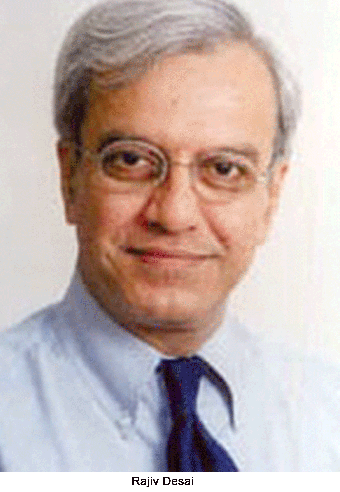RSS/BJP’s losing ticket
 Universities are the swiftest elevators to social standing; they provide students with the academic wherewithal to find a place for themselves in the world. Higher education also unlocks opportunities: in the professions, academy, high councils of society and the state. A college education for the poor and the working class is a release from daily-wage survival; for the middle class, it offers a vaulting opportunity to achievement and accomplishment; for the upper class, it’s an endorsement of wealth and status.
Universities are the swiftest elevators to social standing; they provide students with the academic wherewithal to find a place for themselves in the world. Higher education also unlocks opportunities: in the professions, academy, high councils of society and the state. A college education for the poor and the working class is a release from daily-wage survival; for the middle class, it offers a vaulting opportunity to achievement and accomplishment; for the upper class, it’s an endorsement of wealth and status.
In the West, especially in the United States, universities have long been propagators of knowledge, innovation and progressive ideas on society and culture. They tend to be busy centres of reform movements that often dovetail into larger groups campaigning for civil rights, women’s liberation, gay rights, environment protection and human rights.
In India, universities have been what a US professor, my graduate guide, once called “elite selection programs” in which bright students quickly learn that performance and conformism can help them vault to choice corporate and civil service jobs or to universities abroad. They have served also as ritualistic ashrams for long-suffering young people shepherded onto the right path by authoritarian family structures. Such graduates become part of middle management in the private sector, university teachers and self-employed agents of business and financial services. Universities also play a somewhat unsavoury role as factories for misfits who become the cannon fodder of political parties, trade unions and lower civil services.
The word university is not easily applied in the Indian context because it’s drawn from the Latin root meaning “whole”. Whatever else they may do, universities here do not provide a holistic experience, fragmented as they are by caste, religion, ideology but mostly by poor teachers, irrelevant coursework and cursory examinations. They do not offer the kind of insights into the humanities or exposure to the sciences as do their counterparts in the West.
Nevertheless, universities in India have changed from enclaves of elites to highly politicised islands in a society that has been in upheaval since the economic reforms of 1991. A growing consciousness of rights and entitlements, coupled with higher incomes and better opportunities, have transformed the landscape outside varsity campuses. With people demanding instant pieces of the pie, an environment of growing lawlessness and crime posed major political challenges which governments found insurmountable. Between 1996-2004 there were six governments.
Ten years of the UPA government (2004-2014) saw unprecedented and sustained economic growth. The size of the national pie increased dramatically and with it, the number of claimants. Bruised by a no-holds-barred battle over the US civil nuclear deal in 2008 with its own Left ally, the UPA government began to let things slip. Though it was re-elected with a bigger majority in 2009, the bond that provided the base strength, the understanding between the government and the Congress party, began to fray.
In the event, the opposition parties succeeded in rabble-rousing their way to power. In May 2014, the first majority government in 30 years took office; the first one backed by the RSS, an unelected and shadowy group that neither participated in the freedom movement nor accepted the Constitution and its symbols including the flag and the national anthem.
Though it describes itself a ‘cultural’ organisation, the RSS has an overtly political agenda. It’s spurring the BJP government to eradicate all traces of the liberal nationalism that won the country freedom from British colonial rule, and replace it with a Hindu majoritarian order. In practice, the plan is to shred the thinning sliver of civility that has won this country much admiration. India is an example of how despite poverty and a hundred socio-economic ills, it has preserved a liberal democracy that cherishes freedom, rule of law and universal adult franchise.
Whatever their faults universities are crucibles of liberal values. True, they tend to be illiberal on a spectrum of economic issues. But on all matters of equity, justice, compassion, they stand out as islands of liberalism. Over the past decade, the RSS’ student wing ABVP has made its presence felt on campuses to take Left student organisations head-on. It is at the forefront of the current controversy. In seeking to further its agenda, the RSS probably feels universities are both strongholds and weakest links.
To win support, the saffron clan seeks to pin tags on universities: bastions of left liberals, covens of anti-national elements, fornicators, beefeaters, what have you. Meanwhile, the BJP government thinks it has stalled all opposition to this by tying it up in legal knots, where the litmus test is: do you approve of anti-national groupings?
In the end, without resorting to authoritarian rule, the BJP is on a losing ticket. The world over, in constitutional democracies, universities and students have always come out on top in confrontation with governments. To understand that, though, you have to read history, not forever try to revise it.
(Rajiv Desai is president of Comma Consulting and a well-known Delhi-based columnist)














Add comment